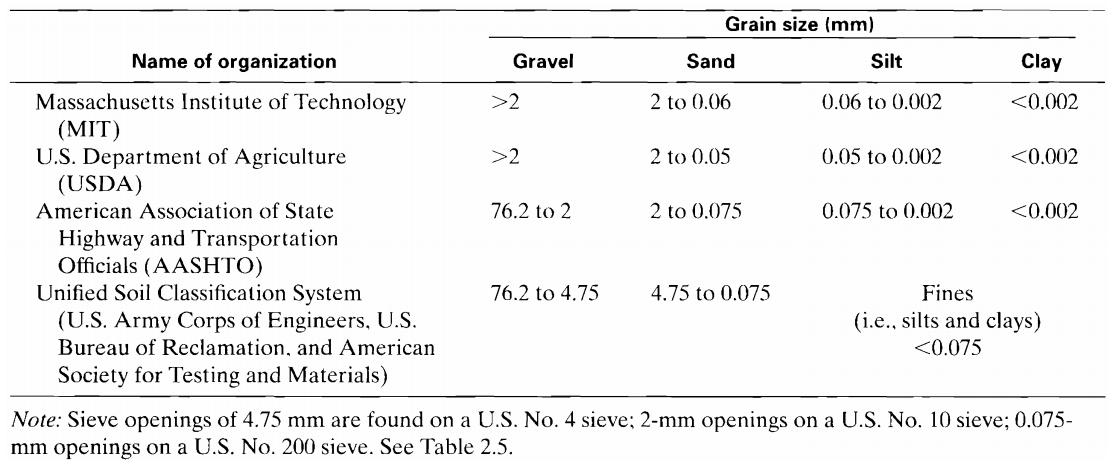Soil-Particle Size
The sizes of particles that make up soil vary over a wide range. Soils are generally called gravel, sand, silt, or clay, depending on the predominant size of particles within the soil. To describe soils by their particle size, several organizations have developed particle-size classifications. Table 1 shows the particle size classifications developed by the Massachusetts Institute of Technology, the U.S. Department of Agriculture, the American Association of State Highway and Transportation Officials, and the U.S. Army Corps of Engineers and U.S. Bureau of Reclamation.In this table,the MIT system is presented for illustration purposes only.This system is important in the history of the development of the size limits of particles present in soils; however, the Unified Soil Classification System is now almost universally accepted and has been adopted by the American Society for Testing and Materials (ASTM).

Gravels are pieces of rocks with occasional particles of quartz, feldspar, and other minerals. Sand particles are made of mostly quartz and feldspar. Other mineral grains may also be present at times. Silts are the microscopic soil fractions that consist of very fine quartz grains and some flake-shaped particles that are fragments of micaceous minerals. Clays are mostly flake-shaped microscopic and submicroscopic particles of mica, clay minerals, and other minerals.
As shown in Table 1, clays are generally defined as particles smaller than 0.002 mm. However, in some cases, particles between 0.002 and 0.005 mm in size are also referred to as clay. Particles classified as clay on the basis of their size may not necessarily contain clay minerals. Clays have been defined as those particles which develop plasticity when mixed with a limited amount of water. (plasticity is the puttylike property of clays that contain a certain amount of water.) Non-clay soils can contain particles of quartz. feldspar, or mica that are small enough to be within the clay classification.Hence, it is appropriate for soil particles smaller than 2 microns (2 μm), or 5 microns (5 μm) as defined under different systems, to be called clay-sized particles rather than clay. Clay particles are mostly in the colloidal size range (< 1 μm) and 2 μm appears to be the upper limit.
